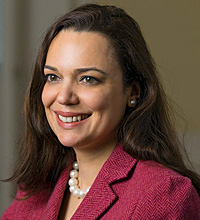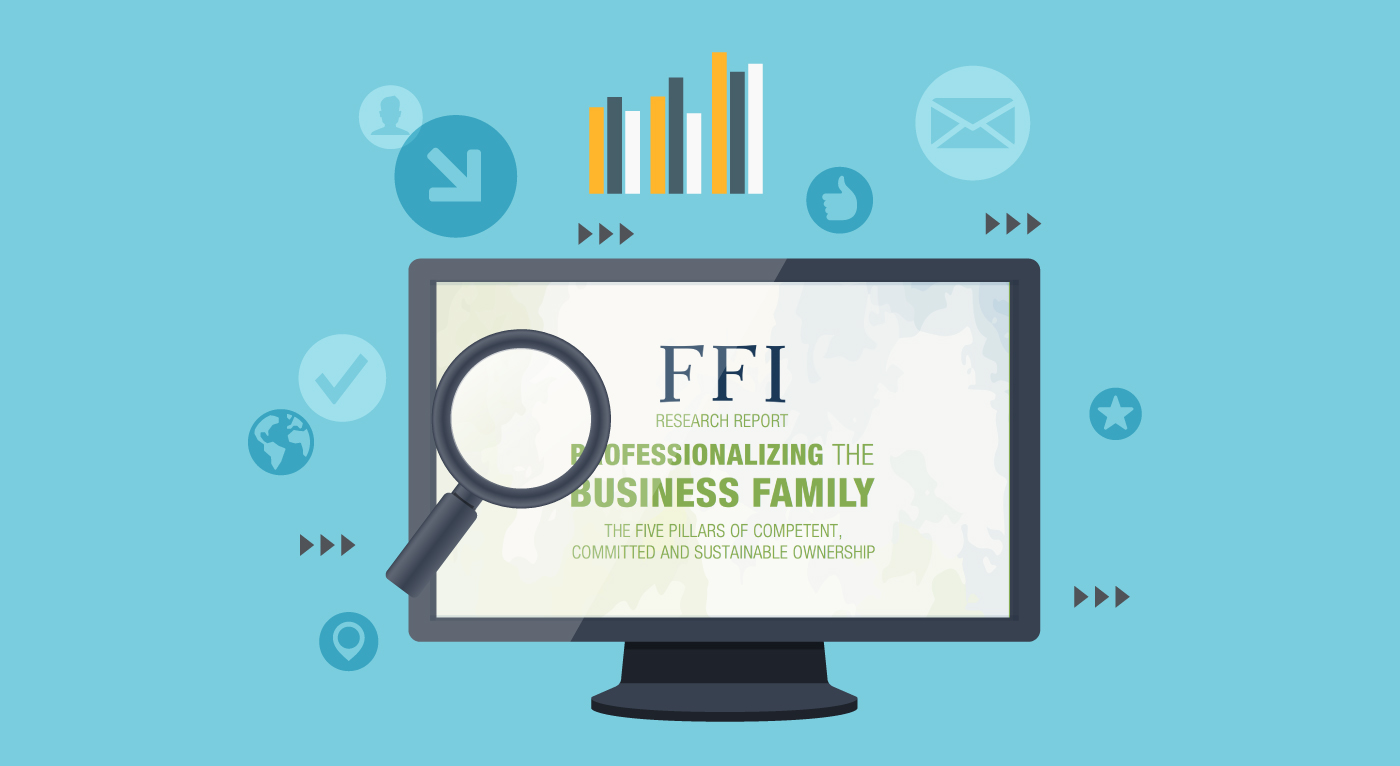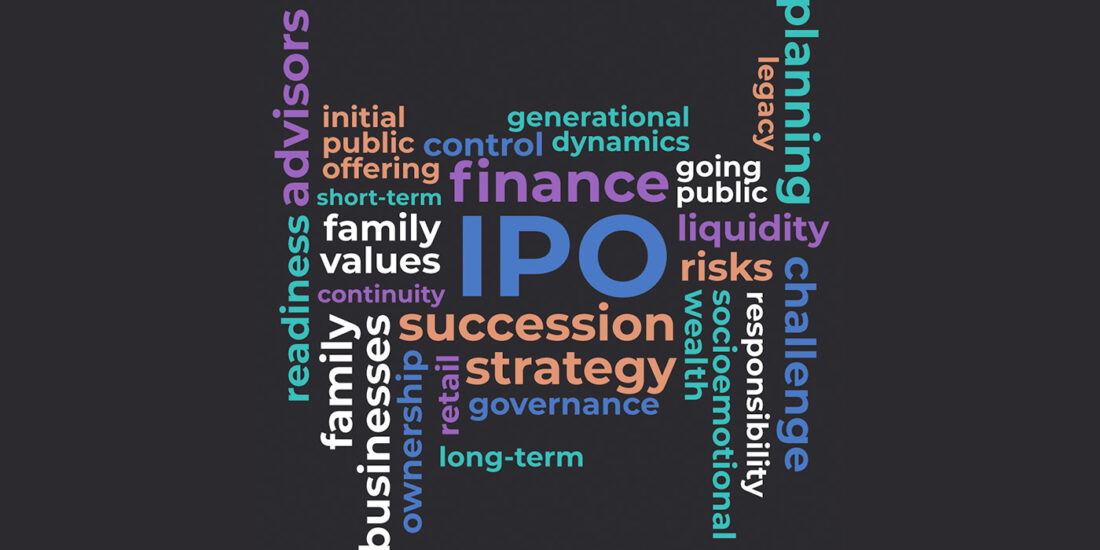
View this edition in our enhanced digital edition format with supporting visual insight and information.
This week we are pleased to continue our series of commentaries on the recently released report, sponsored by the 2086 Society, entitled “Professionalizing the Business Family: The Five Pillars of Competent, Committed and Sustainable Ownership.” Thank you to Maya Prabhu for sharing her reflections on the report’s findings and integrating real-life examples from her own professional experience.
This report, which demonstrates that everything in a business family is connected, helped me reflect on a number of points; I would like to share three key reflections with you.
Before we dive in, a quick word on what the report’s authors mean by ‘professionalizing,’ as clarifying this term is imperative to develop a shared understanding and vocabulary as advisors. This term is used to mean the practice of bringing outside professionals into the family business or introducing more ‘professional’ (read formal) practices into the business family governance and management of its business(es). The authors of the report define Business Family as, ‘A group of legally (through birth, adoption, or marriage), historically, and/or emotionally connected individuals whose identity, income, and/or wealth are (or once has been and has the intention to return to it) connected to business ownership, and who deliberately manage the intersection between the family and the business, and the roles, responsibilities, and relationships within the family.’1
Reflection 1: Investing time, resources, and emotion in the family (individual members and their collective cohesion) is tough, life-long work that is critically valuable.
It starts early. Preparing children as young as three to understand money. Introducing teenagers to the family business through internships. Developing psychological glue through regular family get- togethers – from meals to holidays — so family members get to know each other and build shared memories and bonds. Fostering a culture of caring and candid communication—talking and listening and learning conflict management skills. Building an understanding of family dynamics so individuals can understand what they really may be angry or upset about, and learning how to work together as a family to forgive and to be kind. To be thoughtful about how you talk about your siblings when you come home. To capture, articulate, and live your shared values. To develop a ‘superordinate goal that goes beyond the financial.’ Such goals can range from honouring the founder’s deep religious faith and his/her intention to support the community through employment as an expression of his/her faith –as the Elsener family of Switzerland (Victorinox knife manufacturers) has done –to aiming for the family to remain a cohesive ownership group. To develop owners that see responsibilities as a privilege and don’t just focus on their rights.
As the authors highlight, shared values, purpose, and psychological glue are the foundational pillars upon which professional practices of competence, family “rules of the road,” and governance mechanisms rest. I would add one more point to this from my own experience: creating spaces for individual freedom and autonomy for family members strengthens psychological glue. It is crucial to preserve the ability to make choices for oneself without judgment from others. This could be in family members’ personal philanthropy, in how they choose to spend their dividends, or even in the acknowledgment that some may wish to exit the business but stay close as family. This freedom can create a stronger commitment to the collective enterprise.
HR is a critical function in all businesses for success. So it is too for business families. They need intentional investment of time, money, and emotions, over time, consistently.
Reflection 2: Governance is not a one-size-fits-all template.
The report reminded me of two fifth-generation business families I know. In one, they ‘prune the family tree’ regularly and shares can only be owned by those working in the business. Working in the business is considered an opportunity only for those that have the requisite skills and interest. All are encouraged to work outside the business for a number of years before considering joining. These ‘rules’ are not written anywhere. Currently, there are five family members from two generations who are owners and who work in the business. They speak several times a day and run all major decisions past each other. They go on two annual retreats together where they discuss business and take the time to ‘hang out,’ shooting the breeze and enjoying each other’s company. The younger family members are encouraged to bring new ideas to the table and to try them out. Decisions are made by consensus – if one of them goes quiet, they naturally understand that person does not support the plan and they drop it. Family members who do not work in the business are regularly present at business events, such as store openings or client entertainment events.
This family does not have a family constitution or any formal governance. They have shared goals, deep psychological glue, a strong culture of communication, and they naturally build emotional ownership in the next generation from a young age. All governance is informal. But their numbers (at least of owning family members) remain relatively limited. The challenge they could face is what would happen if increasing numbers of the next generation wish to join the business, which is a topic that will need deeper discussion. The informalities that have worked so well for them so far may not work into the future.
Contrast this with another fifth-generation family. They own highly successful businesses in various industries and have an ownership group of forty-five family members. Ten family members work in the business. Their trusted family advisor (former Finance Director of the business) helped shape their business governance (bringing in independent board members) and their family governance. Their family governance included engaging various family members in facilitated discussion to create a family constitution and a family council. Their constitution sets out the family’s vision and values and includes details relating to ownership, management, and what annual allowance family members can expect. This constitution offers the family some clarity on plans—plans that the patriarch was originally reluctant to discuss. There are also consistent complaints by family members seemingly about money and who may be getting more or less. They feel that the family’s financial performance is shrouded in mystery, as information is shared in a very small group—the family council, who doesn’t feel that the rest of the family needs to know. I am sure that FFI Practitioner readers are able to identify one or two challenges that this family may face in the future!
These two examples support the authors’ assertion that that there is no “one size fits all” approach to governance that works for all families, that formal and informal governance can work or not work depending on the family and the way in which the governance mechanisms are developed, and that laws and rules can add clarity without building cohesion. We learn from the report that formal and informal governance both are desirable and can work in conjunction with each other. What is needed depends on the family’s particular situation—its size, geographic dispersion, and culture, amongst other factors—and that these needs evolve over time and, therefore, so does their governance.
Reflection 3: The frameworks and lessons contained in this report are equally relevant to, and can be adapted to, families of wealth with no operating businesses.
In my practice, I support families who have operating businesses as well as those that have sold their operating businesses. They wish for the fruits of their labour, their financial wealth, to be a source of opportunity for their families for generations, and not to take away individual purpose or to cause conflict.
The Five Pillars described in the report are: 1) developing a foundation based on shared values and goals; 2) strengthening psychological glue; 3) developing ownership competence; 4) fostering informal ways to manage the relationship between the family and the business; and 5) formal governance and professionalization are just the tip of the iceberg.
These pillars are equally useful for families of wealth whose goal is for the family to steward their wealth through multiple generations. Simply creating structures to hold the wealth is not enough of an investment to meet this goal — and worse, it can aggravate existing family dynamics. Developing the family’s shared values and crafting an aligned purpose for their wealth, nurturing family cohesion and individual talent and purpose, building competence in financial skills and philanthropy across the family, and understanding family dynamics especially as they can play out in the presence of wealth are all very important.
These are but three reflections. I am sure that upon reading it, you will find much to think about and useful frameworks to take to your client families.
References
1 “Professionalizing the Business Family: The Five Pillars of Competent, Committed and Sustainable Ownership.” Page 9.
About the Contributor
 Maya Prabhu, FFI Fellow, is Managing Director and Head of Wealth Advisory for J.P. Morgan Private Bank and writes for FFI in a personal capacity. Maya is a member of the FFI board of directors and the 2086 Society. Maya teaches GEN 504: Meaning and Purpose: Philanthropy and the Family Enterprise.
Maya Prabhu, FFI Fellow, is Managing Director and Head of Wealth Advisory for J.P. Morgan Private Bank and writes for FFI in a personal capacity. Maya is a member of the FFI board of directors and the 2086 Society. Maya teaches GEN 504: Meaning and Purpose: Philanthropy and the Family Enterprise.

View this edition in our enhanced digital edition format with supporting visual insight and information.





